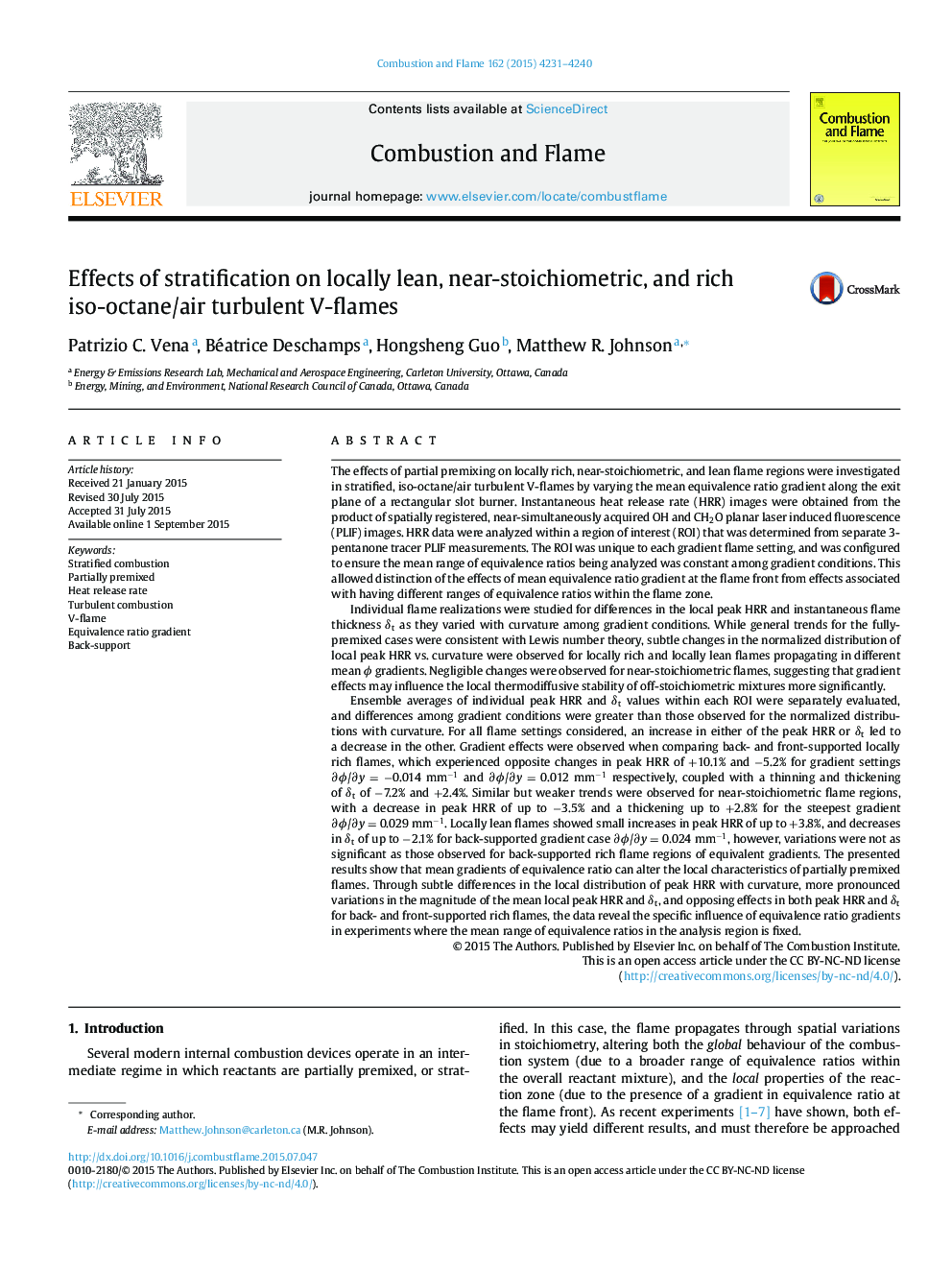| Article ID | Journal | Published Year | Pages | File Type |
|---|---|---|---|---|
| 10264367 | Combustion and Flame | 2015 | 10 Pages |
Abstract
Ensemble averages of individual peak HRR and δt values within each ROI were separately evaluated, and differences among gradient conditions were greater than those observed for the normalized distributions with curvature. For all flame settings considered, an increase in either of the peak HRR or δt led to a decrease in the other. Gradient effects were observed when comparing back- and front-supported locally rich flames, which experienced opposite changes in peak HRR of +10.1% and â5.2% for gradient settings âÏ/ây = â0.014 mmâ1 and âÏ/ây = 0.012 mmâ1 respectively, coupled with a thinning and thickening of δt of â7.2% and +2.4%. Similar but weaker trends were observed for near-stoichiometric flame regions, with a decrease in peak HRR of up to â3.5% and a thickening up to +2.8% for the steepest gradient âÏ/ây = 0.029 mmâ1. Locally lean flames showed small increases in peak HRR of up to +3.8%, and decreases in δt of up to â2.1% for back-supported gradient case âÏ/ây = 0.024 mmâ1, however, variations were not as significant as those observed for back-supported rich flame regions of equivalent gradients. The presented results show that mean gradients of equivalence ratio can alter the local characteristics of partially premixed flames. Through subtle differences in the local distribution of peak HRR with curvature, more pronounced variations in the magnitude of the mean local peak HRR and δt, and opposing effects in both peak HRR and δt for back- and front-supported rich flames, the data reveal the specific influence of equivalence ratio gradients in experiments where the mean range of equivalence ratios in the analysis region is fixed.
Related Topics
Physical Sciences and Engineering
Chemical Engineering
Chemical Engineering (General)
Authors
Patrizio C. Vena, Béatrice Deschamps, Hongsheng Guo, Matthew R. Johnson,
